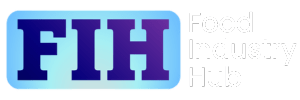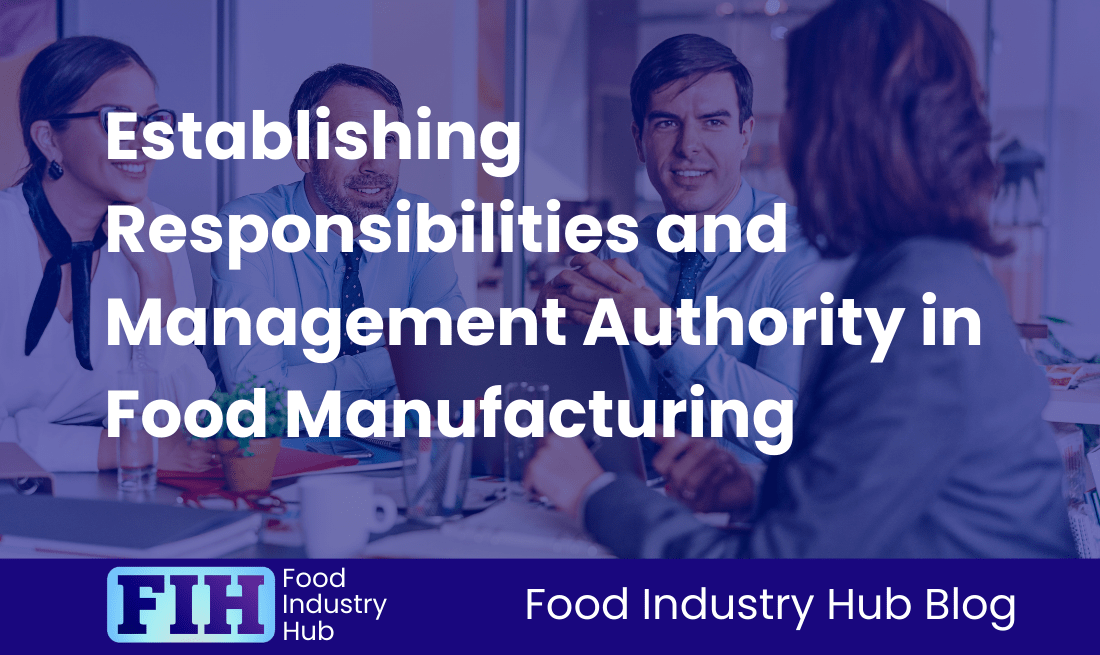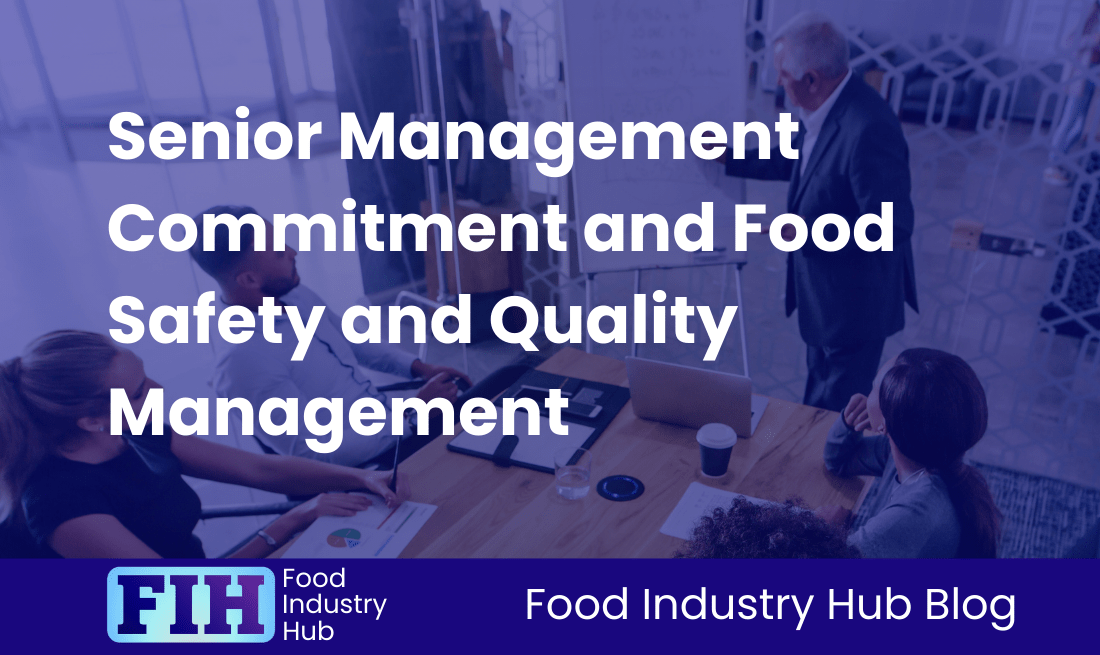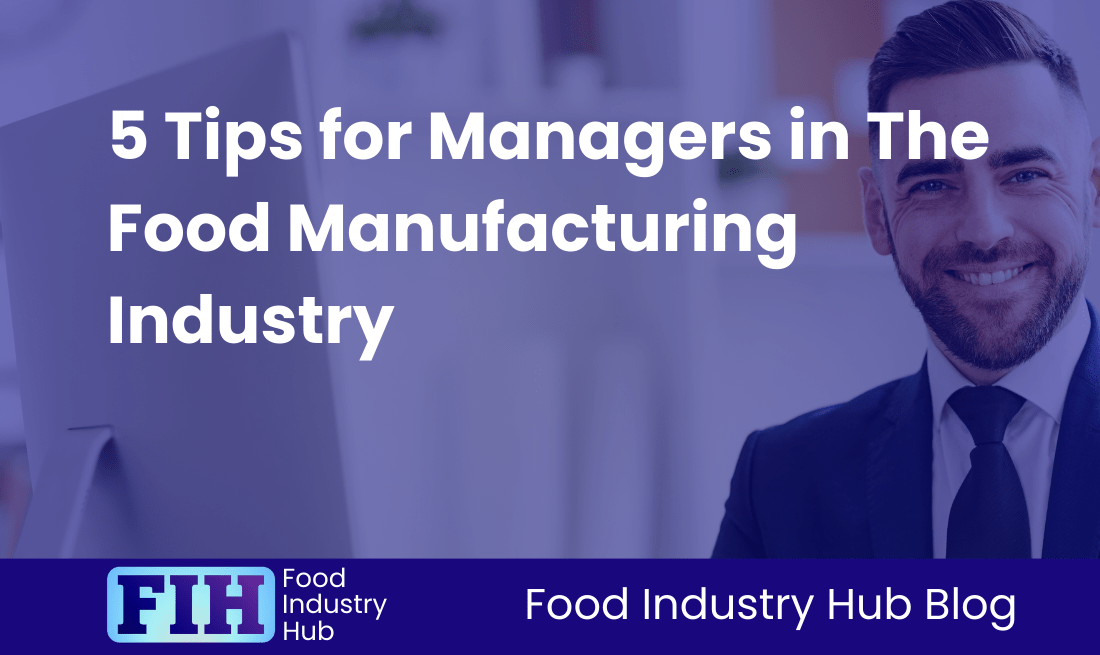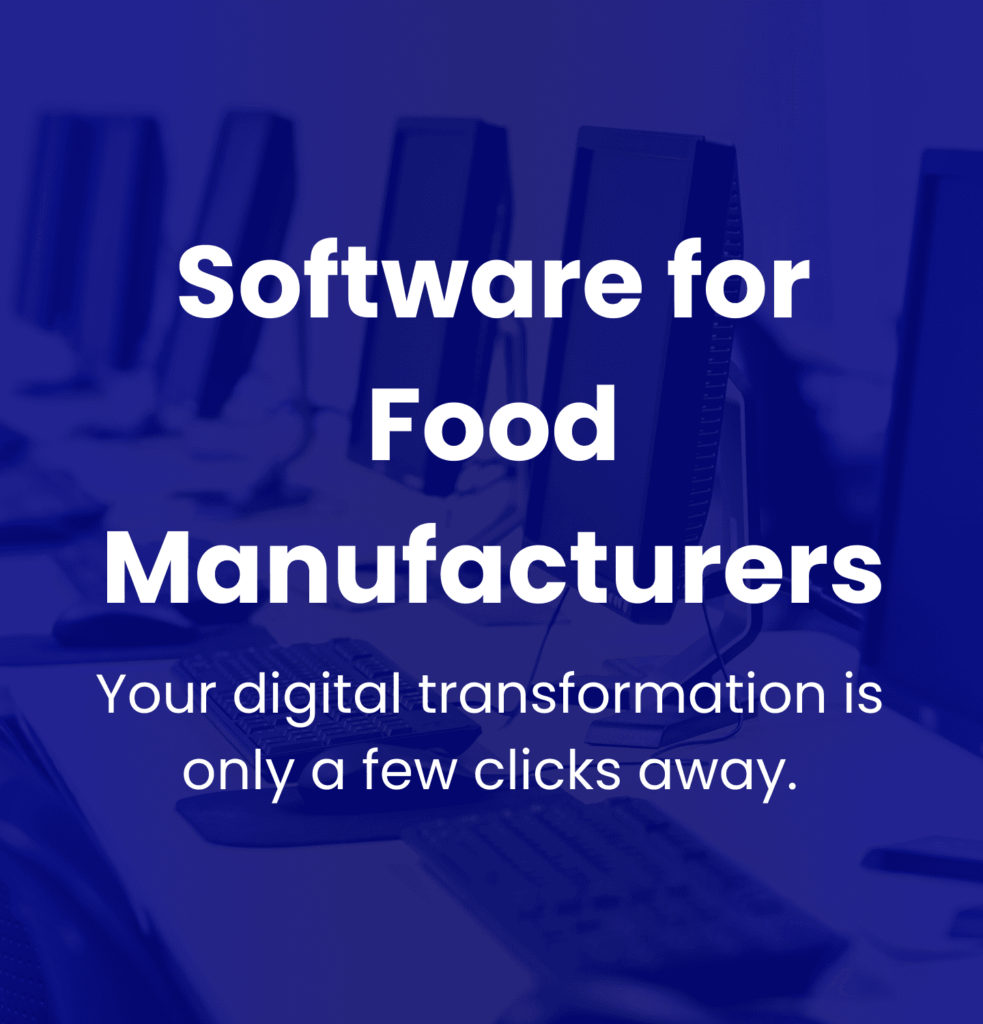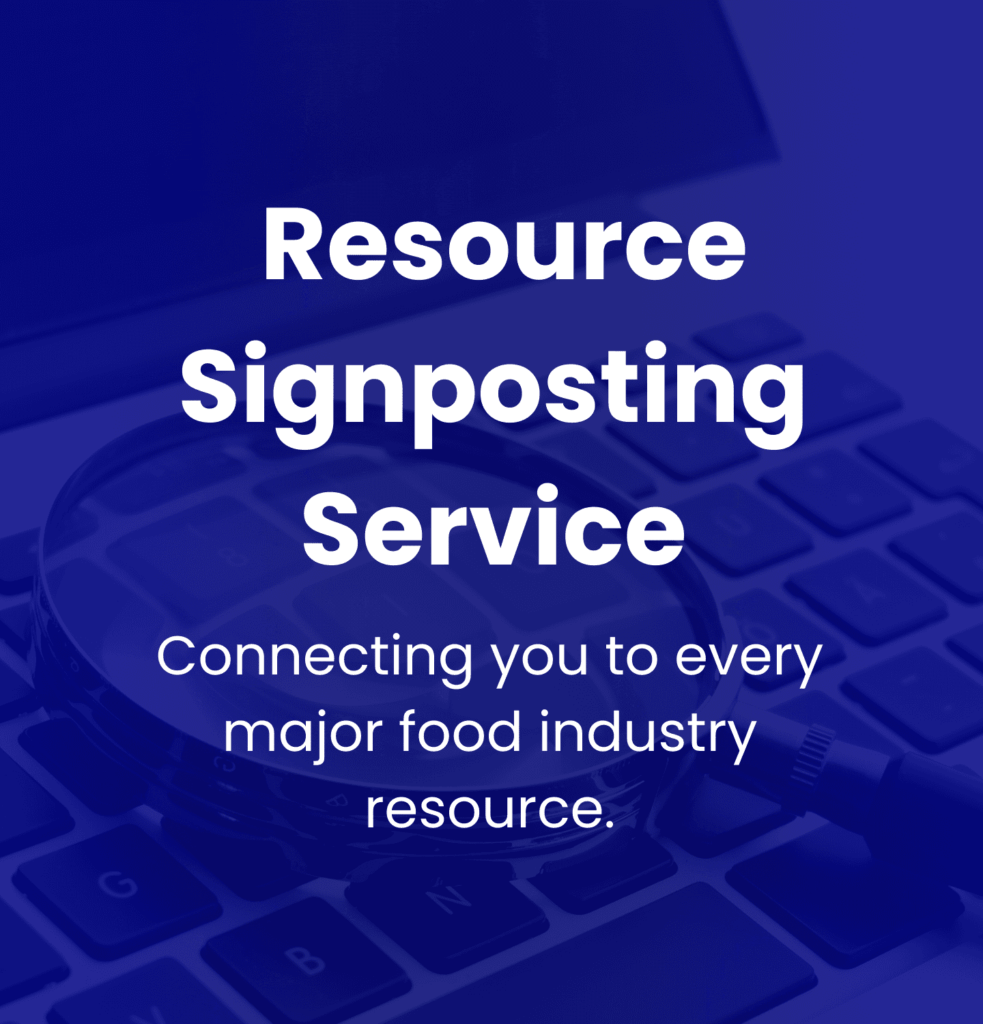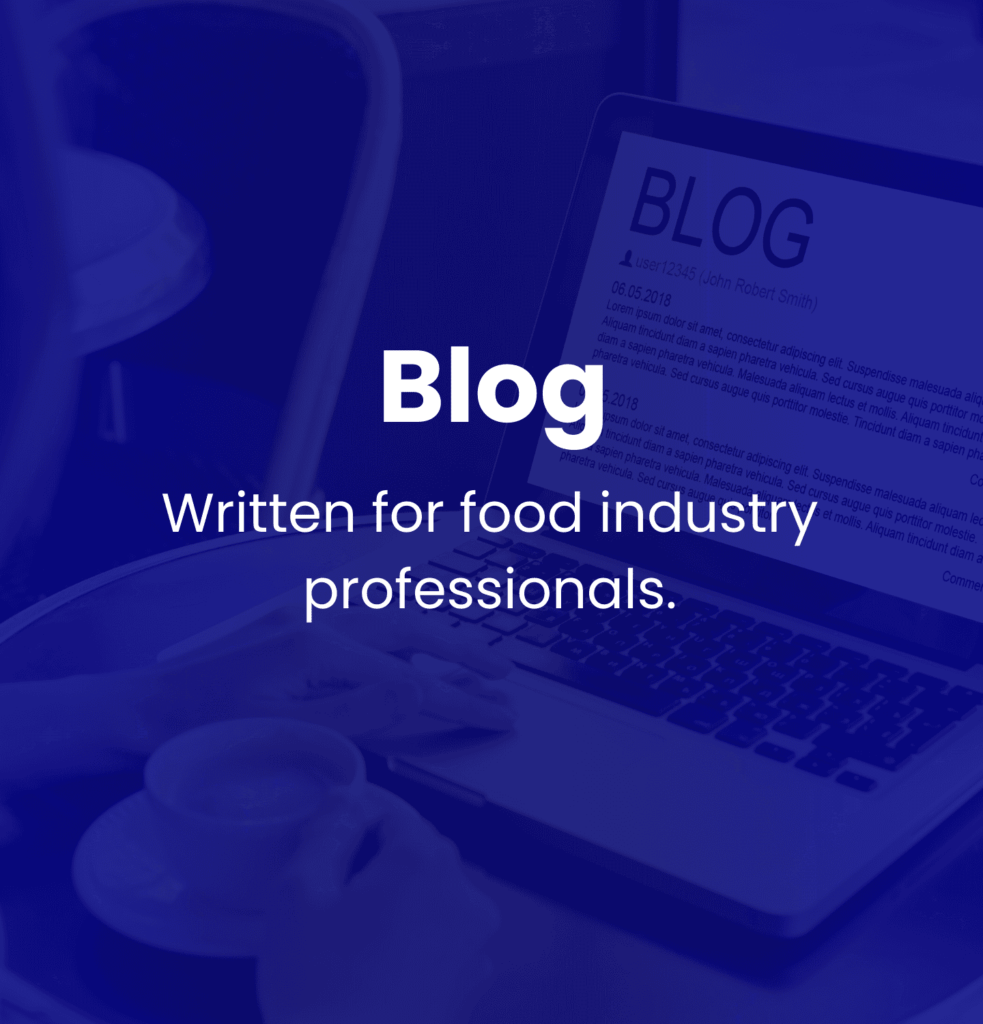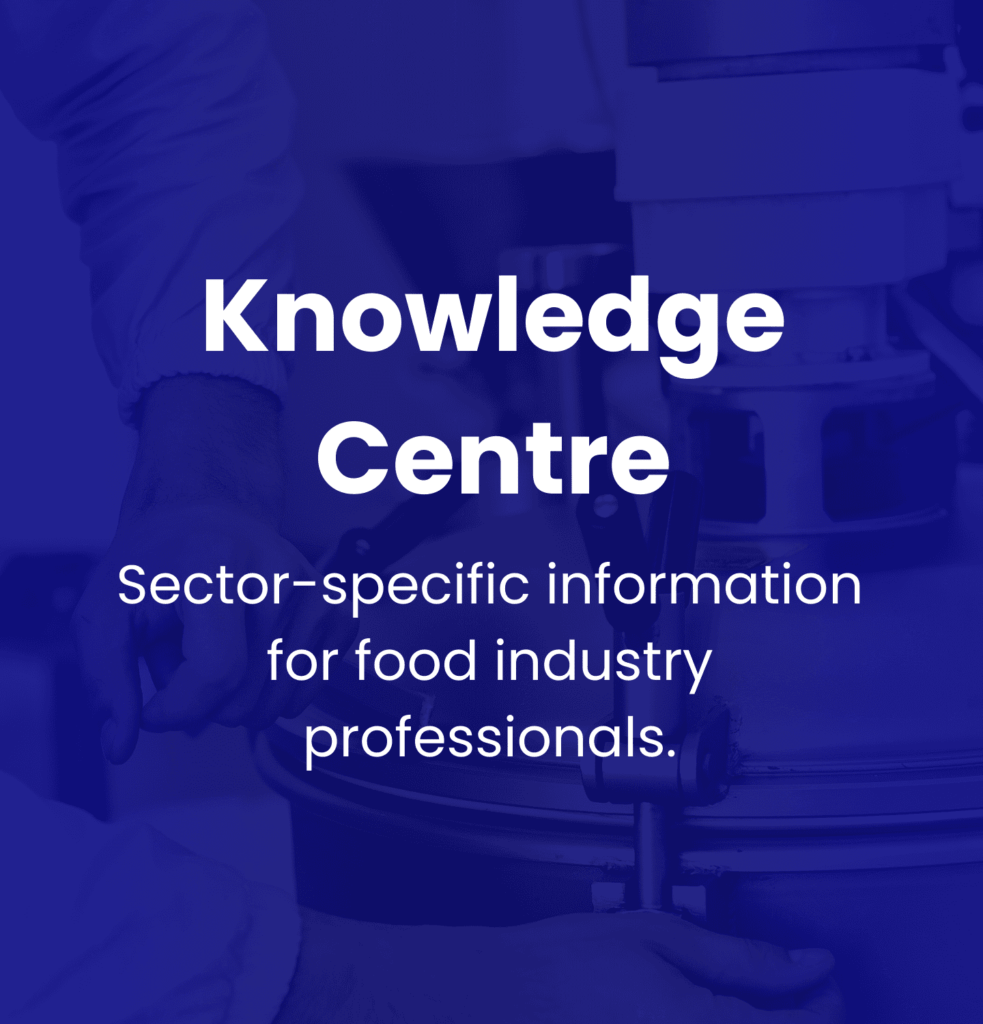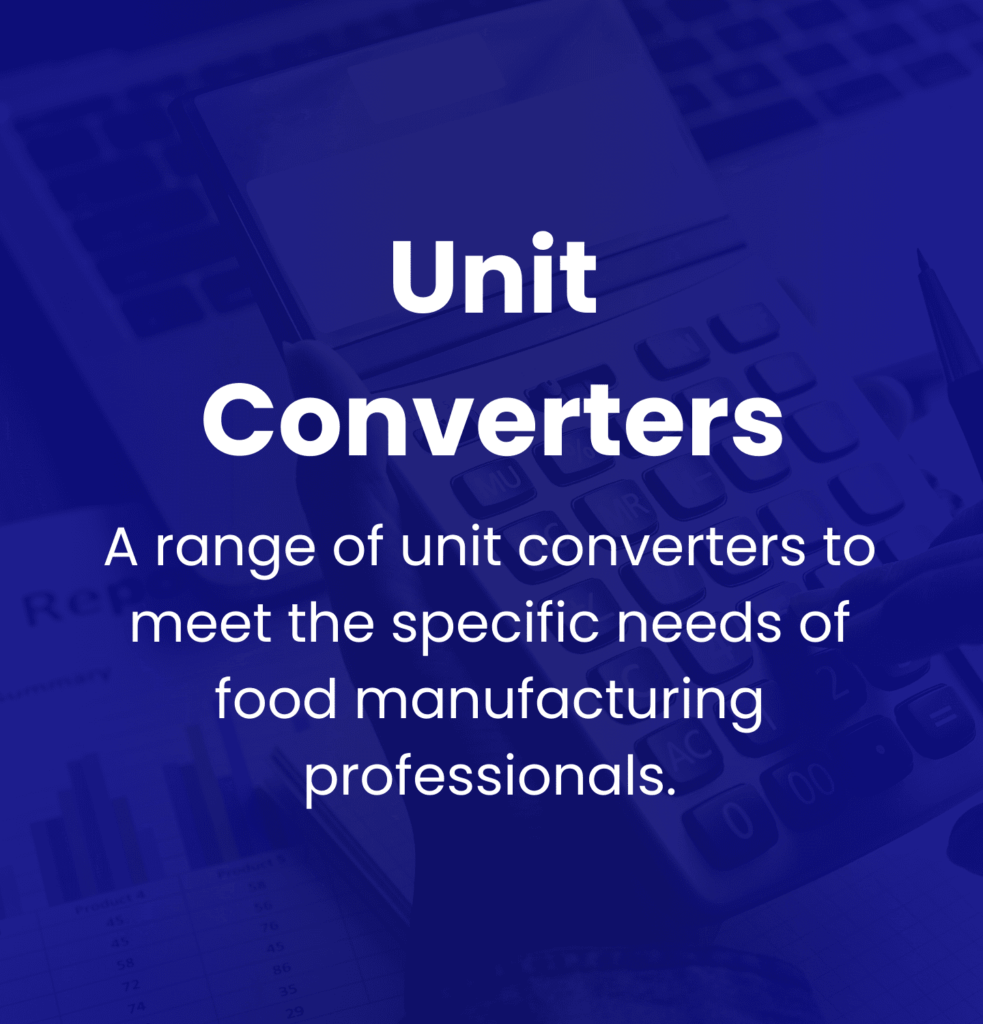Know: Organisational Structure
Contents
Introduction
Key Takeaways
Understanding Organisational Structure Essentials
Structural Design Choices in Food Manufacturing
Regulatory Compliance and Safety in Organisational Structure
Influence of Technology, Data Management on Organisational Structure
Adapting Organisational Structure to Global and Regional Needs
Conclusion
Introduction
In the food manufacturing industry, the importance of a well-planned and adaptable organisational design is undeniable. The organisational structure takes a pivotal role in promoting operational efficiency, supervising quality control, and assuring compliance with regulatory standards. This article aims to expand on the understanding, significance, and key themes linked to organisational structure in this industry.
A proficiently designed organisational structure becomes a necessity to navigate the unique hurdles encountered by food manufacturers, such as ensuring product safety, upholding quality standards, and complying with regulatory stipulations. An effective structure streamlines operations and enhances communication which in turn, supports the decision-making processes, ultimately improving performance.
In food manufacturing, organisational structure can be described as the configuration of how tasks are distributed, assorted, and synchronised. Key constituents include:
- Hierarchy: Hierarchy refers to a vertical sequence of authority tiers, starting from top management and cascading down to the workforce. Clearly specified levels delineate responsibility and accountability.
- Span of Control: It implies the number of employees a manager is accountable for supervising. An optimal span of control facilitates effective supervision, empowering swift decision-making and responsiveness to operational needs.
- Departmentalisation: This entails the division of work into specialised departments such as production, quality control, research and development, and sales. Each department focuses on its specified area, thereby enhancing expertise and operational efficiency.
The organisational structure exerts a profound influence on operations, quality control, and compliance. A transparent hierarchy enables effective delegation of tasks, diminishing confusion and increasing productivity on all levels. Departmentalisation allows for concentrated attention on quality assurance, ensuring that products satisfy both internal and external standards. Additionally, a well-structured design supports adherence to norms by elucidating roles and responsibilities, especially in pivotal areas like food safety.
As we progress through this discussion, several key themes will be examined regarding organisational structure within the food manufacturing industry:
- Basics of Organisational Structure: This comprises an exploration of traditional structures, including hierarchical, matrix, and flat models, and their applicability in the food industry.
- Structural Design Choices: An analysis of how diverse organisational structures, such as centralised versus decentralised models, may affect corporate agility and operational efficiency.
- Compliance & Safety Layers: This entails an understanding of how organisational design is tailored to support rigorous food safety regulations and quality standards.
- Role of Technology & Data: This section discusses the impact of technology in boosting organisational adaptability, automating processes, and bolstering data-driven decision-making.
- Navigating Global & Regional Adaptations: This involves an examination of how organisations modify their structures to accommodate regional regulatory differences and the intricacies of global supply chains.
A proficiently structured and adaptable organisational design is indispensable for securing operational excellence and assuring compliance with food safety standards within the industry. By exploring these themes, we can procure insights into the best practices instrumental for effective organisational structures in food manufacturing.
Key Takeaways
In the food manufacturing sector, a robust organisational structure significantly enhances the ability to meet compliance requirements, adopt new technologies, and adapt to regional variations. This focused approach to organisation can elevate overall effectiveness and competitiveness.
Enhanced Compliance
First and foremost, a structured hierarchy and defined responsibilities are essential for conforming to safety and quality standards. By setting clear roles, businesses can standardise regulatory adherence, lessening the occurrences of compliance issues.
Optimised Technology Adoption
A structured approach facilitates smoother integration of new technologies in food manufacturing. The clear delineation of responsibilities creates an environment conducive for technology advancements, paving the way for an uplift in the operational efficiency.
Agility in Regional Adaptations
Adaptability plays an important role in addressing diverse regional compliance needs and consumer tastes. An effective organisational structure allows for swift adaptation to these regional nuances that are key in ensuring conformity with local regulations. Through this structured approach, solid communication lines are established, equipping teams to align products and processes with local market demands efficiently.
Overall Impact
The vitality of a robust organisational structure in terms of compliance adherence, technology assimilation, and regional responsiveness cannot be overstated. More than just aiding in effective operations, it brings an added competitive dimension in the market.
Food Industry Hub Management Systems can significantly boost the effectiveness of your food safety and quality management system, leading to improved confidence and elevated quality assurance throughout your operations.
Understanding Organisational Structure Essentials
Importance of Clear Hierarchy for Effective Decision-Making
Effective decision-making in food manufacturing greatly benefits from a clear, well-defined hierarchy, especially in view of the uncompromising safety standards demanding explicit accountability. Concrete chains of command expedite the escalation of safety-related matters – securing compliance with key protocols such as Hazard Analysis Critical Control Points (HACCP) and the Food Safety Modernization Act (FSMA) [Source: Food Safety Magazine]. A hierarchical framework enhances the appointment of specific roles for activities related to safety, which clarifies responsibilities and ensures streamlined operations during audits or product recalls.
Significance of Building Departments Around Functional Roles
Establishing departments around specialised functions contributes significantly to optimising expertise and operational efficiency, noteworthy in precision-sensitive areas such as sanitation and regulatory compliance. For example, specialist teams dedicated to sanitation help maintain high standards of cleanliness, thereby minimising contaminating threats [Source: JRG Partners]. In addition, teams devoted to regulatory compliance provide essential guidance through complicated layers of local and international food regulations, ensuring consistent adherence to required legal standards whilst reducing the risks linked to non-compliance.
Centralisation versus Decentralisation
The structure of decision-making authority, whether centralised or decentralised, profoundly affects operational effectiveness within food manufacturing. Centralised structures foster widespread adherence to safety standards, an advantageous approach for multinational organisations that aim for consistency in quality and compliance across all circumstances. Conversely, decentralised systems empower front line workers to take decisions and use discretion to adapt to emerging challenges.
Span of Control
The number of subordinates supervised by a single manager—defined as span of control—holds substantial importance in food manufacturing organisations. High-risk environments such as quality control typically demand a narrower span, necessitating closer supervision to ensure alignment with compliance regulations and prevent possible safety issues. Conversely, a broader span is often more effective in the stable areas of operations, allowing for effective delegation and streamlined communication. A thoughtful balance of span of control is essential to achieve operational efficiency whilst prioritising safety.
Formalisation: Importance of Written Policies
Formalisation within the food manufacturing industry involves maintaining established written protocols specific to operational practices like hygiene, labelling, and traceability. These recorded policies are key to reducing errors and ensuring compliance with regulatory mandates, such as the ones specified by the FSA, FDA, and local health authorities. Providing a set framework for employees to follow not only enhances operational consistency, but also mitigates risks linked to food safety incidents, ultimately aiding organisations to maintain audit-readiness and strengthen their overall reputation.
Core Terms in Organisational Structure
Chain of Command
The chain of command within food manufacturing clarifies the authority structure, demarcating roles and responsibilities from operational staff to management. It serves as an effective system to deal with safety audits and product recalls, ensuring an organised method to tackle safety issues.
Functional Structure
A functional structure organises departments in line with their specialised roles, such as production, quality control, and logistics. This framework enhances operational efficiency and is particularly necessary for food manufacturers, where ensuring regulatory compliance requires expertise within each functional area.
Matrix Structure
A matrix structure fuses both functional departments and project-focused teams. Though potentially complex, a well-implemented matrix structure facilitates cross-functional collaboration for product lines, making it possible to respond to regulatory changes while preserving safety standards in food manufacturing.
Comprehending these key concepts of organisational structure is essential for food manufacturers who strive to improve operational efficiency and compliance in a highly regulated environment.
Structural Design Choices in Food Manufacturing
Role of Cross-functional Teams
In food manufacturing, interdepartmental cooperation — primarily among Quality Assurance (QA), sanitation, and procurement units — is key in reducing contamination risks and adhering to standard regulations. Such cross-functional teams work in unison to supervise quality across all production stages, which bolsters efficiency and product safety. The application of Hazard Analysis and Critical Control Points (HACCP) principles is an example of this, which helps identify potential hazards in the production process and assures compliance with Good Manufacturing Practices (GMPs) with the use of multi-disciplinary teams. The collaborative efforts of these teams set the stage for a comprehensive food safety management strategy, allowing each team to share its specialised expertise towards maintaining consistent product quality.
Maintenance Departments
Dedicated maintenance units play a significant role in preserving hygienic operating environments and curbing equipment-related production delays. Their involvement in regular inspections and proactive maintenance ensures machinery functions optimally without risking contamination or downtime. By complying with hygiene standards, maintenance personnel champion the GMPs’ mandates and feed into the overall production flow, increasing operational efficiency. This commitment to maintenance extends the lifespan of equipment, complementing sanitation goals by keeping production settings clean, free of foreign-body risks, and suitable for food processing [Source: Blue Collar Engineering].
Procurement and Risk Management
Procurement forms the bedrock of risk management in food manufacturing. The deployment of rigorous supplier audits and comprehensive material vetting procedures guarantees that raw materials are obtained from trusted suppliers that meet safety and quality standards. This proactive initiative is imperative to control the risks linked to using potentially hazardous materials in the production process, hence safeguarding the integrity of food products. Besides, maintaining a robust supplier relationship through consistent evaluations improves alignment between procurement procedures and the overall organisational plan, enhancing reliability in supply chains.
Sanitation Focus
The adoption of dedicated sanitation teams is essential for achieving and maintaining the hygiene standards required in food manufacturing facilities. These teams are tasked with devising and implementing exhaustive cleaning protocols to prevent contamination and ensure conformity with industry regulations. A key aspect of their role relates to mitigating health risks and regulatory infringements, which protects consumer safety and brand credibility. By weaving sanitation efforts into broader operational strategies, manufacturers can protect product quality and consumer health.
Integrating Product Development Roles
Incorporating QA at the embryo stages of product development is key to proactively resolving potential compliance problems. Early QA involvement ensures that formulations meet safety and regulatory standards, significantly hastening the time to market. This collaborative method ensures that products are designed with an emphasis on safety and compliance from the get-go, reducing the chance of expensive reworks or product recalls later in the production cycle, thus streamlining the transition from development to production and enhancing overall operational efficiency.
Sign-up for the Food Industry Hub Mail Service
We regularly produce new content for food industry professionals, and the Food Industry Hub Mail Service is the best way to stay up to date with the latest additions.
Signup today to be added to the Food Industry Hub mailing list.
Regulatory Compliance and Safety in Organisational Structure
The development and reinforcement of a safety conscious environment is a key driver towards the attainment of GFSI-benchmarked certifications such as FSSC 22000. This safety-centric culture involves establishing a workplace wherein each team member, regardless of position, engages and contributes towards upholding safety standards. Studies have shown that organisations with a robust safety culture significantly reduce risks associated with food safety and bolster overall adherence to regulations. Companies that weave continuous safety training into their fabric, and encourage employees to report potential hazards, often see improved reporting accuracy and an overall strengthening of their safety management systems.
Audit Preparedness
Regular internal audits are effective tools for proactively identifying and rectifying non-compliances. Not only do these audits allow enterprises to keep abreast with regulatory changes, they also help assess alignment of operations with food safety standards. By developing a structured audit programme that involves multiple departments, companies can identify areas requiring improvement before external audits take place. This practice helps mitigate the risk of penalties and bolsters the organisation’s confidence in meeting certification requirements like BRCGS and IFS. Frequent audit involvement enables organisations to respond swiftly to compliance issues and enhance their overall operational integrity through continuous feedback loops.
Documentation Practices
In food manufacturing, maintaining accurate and detailed documentation is integral to adhering to regional and international standards. Keeping comprehensive records of cleaning activities, ingredient sourcing, and quality control procedures is a prerequisite not just for compliance with certifications such as ISO 22000 and FSSC 22000, but also ensures smooth execution of audits. Effective documentation should facilitate clear traceability and transparency, allowing for swift identification of non-compliance issues. Such practices enable organisations to demonstrate their commitment to operational excellence and reduce risks during audits.
Allergen Management
To effectively mitigate cross-contamination, and conform to regulations such as the FDA’s Food Allergen Labeling and Consumer Protection Act (FALCPA) and the EU’s Food Information to Consumers (FIC) guidelines, it is prudent to integrate dedicated allergen management teams into the organisational structure. Tasked with developing robust allergen segregation procedures, implementing color-coded equipment protocols, and conducting comprehensive staff training, these teams play a vital role in ensuring consumer safety. Frequent audits are key to confirming adherence to these procedures, minimizing allergen-related risks. Such a structured approach satisfies legal requirements and enhances consumer confidence in the safety of the product.
Crisis Management Design
A sound organisational structure is paramount for handling crises such as contamination events or product recalls. Companies should draft clear emergency procedures, design communication strategies, and delineate roles within their teams for effective crisis management. By establishing a framework that outlines responsibilities and processes, organisations can mount quick, coordinated responses to unanticipated events, thereby minimising operational disruptions. This standard of preparedness helps meet regulatory expectations and reinforces stakeholder confidence in the company’s ability to handle crises. Regularly conducting crisis simulations can further enhance readiness, equipping teams with invaluable experience for a variety of scenarios and offering opportunities for continual strategy refinement.
Key Compliance and Safety Terminology
BRCGS: The Brand Reputation through Compliance Global Standard (BRCGS) set forth stringent food safety requirements that need to be met by organisations to assure consumers and retailers of their product quality. The standards call for an organisational structure which emphasises safety and quality, thereby integrating safety protocols into daily operations.
ISO 22000: This standard outlines requirements for a food safety management system which integrates a proactive approach to managing food safety across the supply chain. ISO 22000 emphasises communication, system management, and cross-departmental collaboration in hazard management. This necessitates a structured approach which incorporates risk assessment, ensuring consistent safety practices at all operation levels.
Preventive Controls: Defined as part of FDA’s Food Safety Modernization Act (FSMA), preventive controls refer to systematic measures that need to be implemented to identify and mitigate food safety hazards before they occur. This regulatory framework often requires the designation of dedicated personnel, known as Preventive Controls Qualified Individuals (PCQIs), to oversee compliance measures and ensure proactive risk management across food manufacturing processes. This influences how organisations structure their compliance activities, necessitating clear delineation of responsibility and authority within food safety operations.
By internalising and integralising these compliance frameworks into their organisational structure, businesses in the food manufacturing sector can better navigate the complex regulatory landscape, whilst enhancing product quality and instilling greater trust in consumers.
Influence of Technology and Data Management on Organisational Structure
Seamless integration of advanced technologies and comprehensive data management systems can considerably support the organisational structure of food manufacturing companies. Such transformations not only optimise operational efficiency but also help establish a company culture centred around compliance and innovative approaches, equipping businesses to tackle the intricate challenges of today’s modern food industry.
Role of ERP Systems
Enterprise Resource Planning (ERP) systems hold a key position in optimising functions within the food manufacturing sector. By integrating various business processes, such as procurement, production, and compliance management, ERP systems offer a unified platform that improves visibility and management over operations. ERP systems can also streamline recall processes with detailed, traceable records which quickly identify affected products, permitting food manufacturers to address promptly any safety concerns arising in the supply chain [Source: Manufacturing.net].
IoT and Real-Time Monitoring
The Internet of Things (IoT) is overhauling the method of monitoring key parameters like temperature and sanitation levels throughout production. IoT tools offer real-time monitoring, ensuring that food products consistently meet the set safety standards. For instance, sensors keep a continuous check on temperature and humidity within storage units, immediately alerting staff in case of deviations that might compromise the quality of the product. This level of active supervision not only ensures compliance with regulatory guidelines but also enhances overall product safety, effectively reducing the risk of contamination during production and storage [Source: Produce Processing].
AI Across the Value Chain
Artificial Intelligence (AI) bolsters food manufacturing operations through predictive analytics and machine learning. These technologies can anticipate machinery failures, curbing downtime and minimalizing risks related to contamination arising from operational disruptions. By analysing data from varied sources – such as machinery sensors and operational histories – AI systems can identify anomalies that might indicate potential hygiene or safety issues. Implementing preventative measures based on such proactive strategies aids in enhancing overall product consistency and quality across the value chain.
Digital Training
Online training platforms supported by technology are proving essential in ensuring that all workforce individuals are well-versed with the required hygiene practices and compliance norms. These platforms offer standardised training modules, accessible remotely, that address the challenges of ensuring consistent knowledge retention across diverse teams. This form of standardisation not only supports compliance with set regulatory standards, but it also promotes a culture of accountability and safety within the workforce, enabling employees to actively contribute to safety and quality initiatives.
Key Technology and Data Management Terminology
Understanding key terminology is fundamental when navigating the technological landscape in food manufacturing:
- Manufacturing Execution System (MES): These software solutions oversee and manage production processes in real time, tying production activities to business systems to boost efficiency and maintain quality control.
- Laboratory Information Management System (LIMS): LIMS assists in managing laboratory data, promoting effective quality control and compliance through accurate tracking of testing processes.
- Supervisory Control and Data Acquisition (SCADA): SCADA systems provide real-time monitoring and control of industrial processes, guaranteeing operational efficiency and timely response to any deviations in production conditions.
Each of these technologies significantly reshapes organisational structures within food manufacturing, leading to improved operational efficiency, higher compliance levels, and better safety standards. Embracing such a technology-driven framework is essential to meet the rising demands of consumers and regulatory bodies.
Adapting Organisational Structure to Global and Regional Needs
Importance of Local Compliance Teams
For food manufacturing, the challenge to keep up with various regulatory directives requires formidable local compliance teams skilled and informed on sector-specific regulations enforced by a myriad of bureaucratic entities. Regulatory organisations such as the Food Standards Agency (FSA) within the UK, the European Food Safety Authority (EFSA) across the EU, and the Food and Drug Administration (FDA) within the US, each lay down their unique set of food safety standards, labelling rules, and guidelines on ingredient usage, that often vary considerably from one region to another. For instance, when complying with the FSA, maintaining allergy labelling standards as specified under Natasha’s Law to improve consumer safety becomes a requirement. Hence, local compliance teams become indispensable by ensuring these guidelines are met, thereby reducing risks such as penalties or product recalls and boosting consumer faith in the process. Companies that empower their local teams to adapt to regulatory changes swiftly as they occur can maintain their operational standards and market accessibility.
Flexible Production Models
As the food manufacturing industry evolves, mastering modular and flexible production setups has become increasingly indispensable, as manufacturers strive to meet the shifting market demand for products such as vegan and gluten-free foods. The versatility of these models allows manufacturers to revamp production lines with reduced downtime, critical for catering to differing tastes and dietary preferences worldwide. This versatility not only streamlines output but also enhances productivity, ensuring manufacturers keep stride with the evolving nature of the food industry.
Cultural Sensitivity in Leadership
For multinational food manufacturing businesses, incorporating cultural sensitivity into leadership strategies is key to enhancing productivity and employee engagement. Tailored leadership styles that align with local cultural norms enhance communication and team dynamics. For instance, leaders in cultures that assign importance to hierarchical order might choose to be more authoritative, whereas cultures that value egalitarianism might thrive better under a more collaborative leadership style. Recognising and accommodating these cultural differences is instrumental in making employees feel seen and, in turn, reduces turnover and improves operational efficiency. By imposing a culturally sensitive approach to leadership, companies can effectively manage diverse teams and stimulate a climate of higher morale and engagement [Source: Harvard Business Review].
Strategising for Sustainability
Given the rising environmental concerns, food manufacturers need to design their organisational structures with an emphasis on sustainability. This involves establishing roles around sustainability in both regional and global units, aligning operational practices with local environmental regulations. By integrating sustainability into their organisational design, food manufacturers not only meet regulatory standards but also boost their brand reputation among eco-friendly consumers. This concentration on sustainability can lead to cost cutbacks, improved compliance with harsh environmental regulations and support enduring operational viability.
Trade Agreement Navigation
The dynamic nature of international trade agreements, including shifts resulting from events such as Brexit, demand a resilient organisational structure. Companies must introduce changes swiftly to accommodate fluctuations in tariffs, customs regulations, and documentation requisites to avoid disruptions in their supply chains. For example, creating regional units tailored to handle local compliance and logistical challenges has become pivotal in managing these complexities. Organisational adaptations that allow the formation of local sourcing offices or dual customs units can support smoother transitions in response to new trade policies. Prioritising flexibility in operational models empowers organisations to sustain sourcing and distribution processes, and assures resilience despite fluctuating trade dynamics.
Key Terminology in Global and Regional Adaptations
Dual Reporting: This refers to organisational structures where employees are answerable to both their regional and global superiors, facilitating focused attention to local compliance as well as alignment with broader corporate objectives.
Local Content Rules: These are regulatory stipulations that require a specified proportion of materials or services to be sourced from within the region, which influences procurement decisions and situating of production units greatly in the food manufacturing sector.
Incoterms Compliance: Adhering to internationally recognised commercial terms defining the responsibilities of buyers and sellers in international trade and shipment, essential for managing logistical operations across borders effectively.
Incorporating these principles into their organisational structures enables food manufacturers to adeptly adapt to local regulations and market needs while refining operational efficiency in a competitive environment.
Conclusion
A Recap of Major Themes Discussed
Organisational structures within the food manufacturing sector display certain consistent themes due to the intricacy and unique requirements of the industry. These include:
Clear Chain of Command and Defined Roles
An explicit chain of command is essential for operational clarity and efficiency. By defining responsibilities and management authority, transparency and accountability are vastly improved within the organisation. Such clarity can mitigate operational confusion and enhance the process of meeting safety and quality standards. As suggested by industry experts, an unclear hierarchy might exacerbate risks, which is a sensitive issue in food manufacturing where absolute compliance with regulations is essential.
Structured Management
The application of structured management techniques is pivotal for refining operations. This approach not only amplifies safety and quality standards, but also aids in minimising inefficiencies and errors. For example, a structured framework allows swift action during emergencies, enabling quick responses that are vital for maintaining product safety.
Adaptability and Flexibility
The dynamic and competitive environment in which the food manufacturing industry operates necessitates organisational structures that are both flexible and adaptable. Companies should be poised to adapt to changing market conditions, regulatory amendments, and shifts in consumer preferences. An inflexible structure may stifle innovation and responsiveness, key factors in maintaining market relevance.
Communication and Coordination
Smooth communication across departments and different management levels is a core component of operational efficiency. Effective communication helps align all team members to their roles and responsibilities, which is especially significant for maintaining high quality and safety standards. Miscommunication might lead to costly blunders, thus solid communication channels are a top requirement for food manufacturers.
Hierarchical vs. Matrix Structure
A decentralised matrix structure can give operational autonomy to subsidiaries. This agility needs to be complemented with centralised supervision to ensure control and coordination across various branches. Striking a balance between local responsiveness and compliance with global standards poses a common challenge for major food manufacturers.
Key Insights for Professionals
In order to best navigate the complexities of the food manufacturing sector, professionals must cultivate a comprehensive appreciation of organisational structures:
- Comprehensive understanding: A thorough grasp on organisational dynamics enables food manufacturing professionals to more effectively tackle operational efficiency and compliance requirements. Recognising the importance of a structured management style may result in improved coordination and effectiveness within the production teams.
- Regulatory compliance: Adherence to regulations is a corner stone of success in food manufacturing. A well-defined chain of command boosts accountability and traceability, both of which are necessary for fulfilling local and international food safety provisions.
- Innovation and adaptation: The ability to innovate and adapt within organisational structures offers a competitive advantage to manufacturers. Keeping abreast of technological advancements and market trends while maintaining operational efficiency is key to succeeding in this quickly changing sector.
A thoughtful organisational structure is paramount for food manufacturing firms—it guarantees maximum efficiency, safety, and quality, whilst facilitating compliance with increasingly complicated regulations. Understanding and implementing these principles is vital for industry professionals seeking to effectively confront contemporary challenges.
About The Food Industry Hub Knowledge Centre
The Food Industry Hub knowledge centre delivers informative content on a variety of topics pertinent to the food manufacturing industry.
You can return to all topics by clicking here.
From The Food Industry Hub Blog
Expanding on this topic with related content from our blog.
